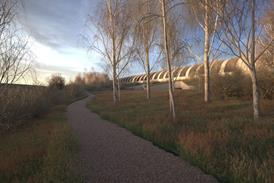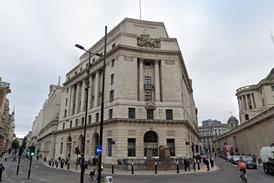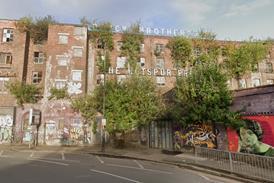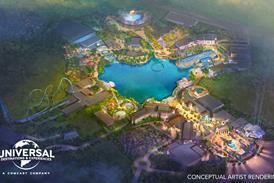Community, wellbeing, and sustainability are key to creating happy and productive office spaces, writes Katie Lin

When it comes to establishing workspaces that reflect 2023 ways of working, specialists across design, construction and project management are called upon to skillfully balance the interests of employers and employees. Unsurprisingly, the former tend to concentrate on space efficiency; how to attract people back to the office; how the space will stand the test of time, and matters of sustainability – a key concern for most businesses’ stakeholders.
The latter tend to place importance on how much their office environment is considerate towards their wellness and comfort, as well as providing opportunities for social interaction and collaborative activities.
It’s a delicate balancing act I’ve encountered frequently in my role as Workspace Design Lead at GPE, the London-based property development company. In post-pandemic years, our team has noticed three overarching themes which, when carefully considered in the planning stages, result in best-in-class shared working environments in 2023. These categories are: community, wellness, and sustainability.
Building a community
The main motivator for working in a shared office space is being actively aware of your place within a bigger network. People are far likelier to be drawn to office spaces if opportunities for interaction and collaboration have been carefully considered.
We have seen a rise in demand for meeting rooms; from small, cosy rooms designed for confidential conversations to boardrooms that can host large group meetings, as well as a variety of meeting zones across the floor plate – i.e. open meeting booths, collaboration areas, and huddle rooms.
As you might expect, people tend to flock to areas where hot drinks are in ample supply – therefore, we ensure that tea points aren’t considered ‘behind the scenes’ areas but are treated as the ‘heart’ of workspaces. They are designed with flow and usage in mind and equipped with furniture to host impromptu catch-ups.
Other routes we’ve seen businesses explore to boost the community-like feel of office spaces include introducing ‘club areas’ fitted with a bar or cafe, event space, screening room, recording studio, gym and rooftop terrace. It’s this type of star appeal that can pay dividends when it comes to retaining staff, attracting future talent, and gaining recognition as a premium employer.
To that end, GPE has clustered its flexible office buildings in concentrated central locations to offer our customers easy transport links, access to a wide variety of local amenities and leisure spaces. In doing so, we’ve expanded the office micro-community to macro-community experiences.
Employee wellbeing
We’ve also noticed a surge in employers factoring in how workspaces might contribute to their employees’ overall wellbeing. Time-tested additions include ergonomic furniture; locating desks close to windows to ensure maximum natural daylight throughout the day; incorporating plants to bring nature indoors to help improve air quality.
To ensure sensory comfort, lighting temperature is adjusted to warmer kelvins along with the use of natural materials and paint colours to create warm, soft environments. Acoustic wall and floor treatments are introduced to improve acoustic comfort and reduce sound reverberation, improving audibility during virtual meetings – key elements of flexible working spaces in 2023.
We’ve also noticed companies prioritise diversity, equity, and inclusion (DEI) considerations by establishing multifunctional wellness rooms for nursing mothers, private prayer, rest, and health consultations. Moreover, areas are being designated as quiet working zones for people who need head-down time for concentrated work or time away from the office buzz.
Future-proofing with sustainability
When GPE is appointed to renovate a building for office space, our first port of call is minimising embodied carbon. We do this through applying circular economy principles across the refit, from repurposing structural steel, raised floor tiles, timber and stone, to incorporating pre-loved furniture to our interior designs.
We also install blinds to reduce solar gain, as well as LED lights and PIR sensors to reduce operational carbon. These M&E design measures and the use of improved building fabrics have resulted in an EPC rating of B, at minimum, across our spaces.
At GPE, we incentivise our customers to prioritise energy efficiency in the day-to-day running of their offices. We do this by ‘gamifying’ energy use tracking through our sesame® app, which provides smartphone integration across building access, thermal comfort, and lighting functionality.
Though not an exhaustive list of the many conversations that take place behind the scenes, the themes above constitute a solid starting point for creating shared working spaces that blend the requirements of employees looking for inspiring workspaces with those of businesses and their stakeholders.
>> Also read: Hanover: Exemplary collaboration and placemaking
Postscript
Katie Lin is Workspace Design Lead at GPE
















No comments yet